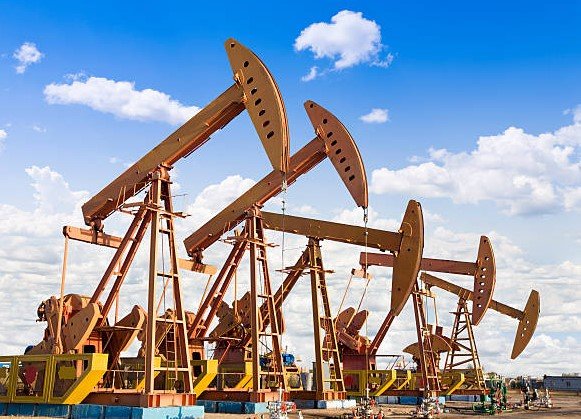Oil prices climbed on Tuesday as OPEC+ chose a smaller than expected production increase, easing fears of a supply flood. At the same time, worries about tighter Russian oil flows due to possible new sanctions added support, pushing Brent crude to $66.37 a barrel and U.S. West Texas Intermediate to $62.58.
OPEC+ Opts for Cautious Output Boost
OPEC+ members agreed to raise oil production by 137,000 barrels per day starting in October. This move marks a shift from earlier cuts meant to last until 2026, but it falls short of what many analysts predicted.
The group, which includes major players like Saudi Arabia and Russia, has been unwinding voluntary reductions step by step this year. Previous hikes reached 555,000 barrels per day in September and August, showing a pattern of gradual increases to regain market share.
This decision reflects caution amid high output from non OPEC nations, such as the United States, which hit record levels in 2025. Analysts note that faster ramps could lead to oversupply, hurting prices further.
Demand has also lagged behind early year forecasts, adding pressure on the cartel to balance supply carefully.

Russia Supply Concerns Drive Market Jitters
Fresh tensions in the Russia Ukraine conflict have sparked fears of stricter sanctions on Russian oil exports. After a major air strike on Kyiv, U.S. President Donald Trump hinted at escalating restrictions, which could disrupt global supply chains.
Russia remains a key oil producer, and any new curbs might tighten availability, especially in Europe and Asia. This comes as Moscow faces ongoing pressure from Western nations over its actions.
Market watchers point out that similar threats in recent months have already influenced trading patterns. For instance, some buyers have shifted away from Russian crude to avoid risks.
These developments counterbalance the OPEC+ hike, creating a tug of war between added supply and potential shortages.
Here are key factors fueling Russia related worries:
- Potential U.S. led sanctions targeting Russian oil trade.
- Recent attacks raising geopolitical risks.
- Shifts in buyer behavior toward safer suppliers.
Impact on Global Oil Markets
Prices gained modestly, with Brent up 0.53 percent and West Texas Intermediate rising 0.51 percent in early trading. This rebound follows last week’s dips, driven by oversupply concerns.
Traders see this as a short term lift, but broader trends suggest challenges ahead. High U.S. production and slowing global demand could cap gains.
In related events, oil markets have felt ripples from U.S. policy shifts, including efforts to boost domestic energy output. This aligns with White House goals for lower fuel costs at the pump.
Analysts from firms like ANZ highlight that without deeper cuts, prices might dip into the low 60s by year end.
The following table shows recent OPEC+ output changes:
| Month | Output Increase (bpd) |
|---|---|
| June | 411,000 |
| July | 411,000 |
| August | 555,000 |
| September | 555,000 |
| October | 137,000 |
Future Outlook for Oil Prices
Looking ahead, experts forecast Brent averaging around $65 per barrel for the rest of 2025. This assumes no major disruptions from sanctions or conflicts.
If OPEC+ continues modest hikes, it could help stabilize markets, but risks remain from non OPEC supply growth. Demand recovery in key economies like China will play a big role.
Logical reasoning suggests that balanced increases might prevent a price crash, yet geopolitical wildcards could swing things upward.
Traders should watch for updates on sanctions, as they could reshape supply dynamics quickly.
Broader Economic Implications
Rising oil prices affect everything from gas stations to airlines, potentially fueling inflation if sustained. Consumers in the U.S. and Europe have already seen pump prices fluctuate this year.
On the flip side, producing nations benefit from higher revenues, aiding budgets in places like Saudi Arabia.
This situation ties into global energy transitions, with renewables gaining ground amid fossil fuel volatility.
Share your thoughts on how these oil shifts might impact your daily life. Comment below or spread the word to keep the conversation going.
